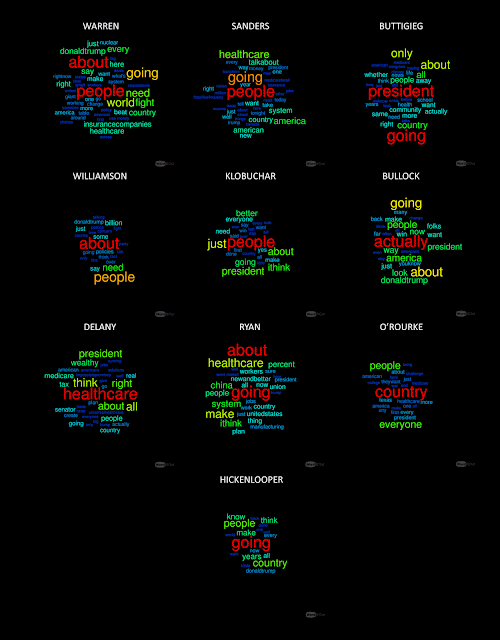- Healthcare is a business. Multiple industries profit off of people only when they get sick, so patients pay for “healthcare” rather than for the “health” that they actually want.
- Illusion of choice. With fewer and fewer medical providers, particularly in rural areas, patients are stuck with whatever is available.
- Upselling. The same people who tell us what is wrong with us sell us on the solution to fix it. This inevitably incentivizes prescribing unneeded and expensive tests.
- After-the-fact reimbursement. Third-party payer systems leave patients asking insurance companies to pay for healthcare costs after the services have been delivered, which runs the risk of leaving the entire burden of cost to the patient.
- Cost. Costs are out of control, and instead of finding ways to reduce the cost system, payers and healthcare providers find ways to pass on the costs to patients.
Medicare for All (MFA), he argues convincingly, is the only way to solve our country’s healthcare woes. MFA is a single payer health plan that would extend healthcare to everyone in the country. Doctors, hospitals, and pharmaceutical companies would remain private, while the government becomes our public insurer. The cost of the program would be borne out by some combination of taxes, but if done properly, this system would eliminate copays and deductibles and cover all healthcare expenses. Simply put, MFA would eliminate the problems of healthcare as a business.
Given all of this, why wouldn’t all progressives support Medicare for All? As Senator Warren commented, “I’ve actually never met anyone who likes their health insurance. I've met people who like their doctors. I've met people who like their nurses. I've met people who like their pharmacists. I've met people who like their physical therapists. What they want is access to health care.” Supporters of the far left candidates are not only annoyed at the rest of the electorate for dismissing MFA, but genuinely perplexed by anyone’s hesitation.
Except, well, here’s the thing. Actually two things. Two big things. Two key questions hang over the entire healthcare debate and no Democrat wants to give them voice, at least not directly.
- Who do people trust, big business or big government?
- How much are people willing to gamble on getting NOTHING?
MFA requires complete trust in the government. Despite a reliance on government programs such as Medicare and Medicaid, despite worrying about corporations incentivizing profit over public good, despite some beautifully outlined villains in the healthcare debate in the form of Big Pharma and Big Insurance Companies, PEOPLE DON’T TRUST THE GOVERNMENT. A recent Gallop poll reported that 60% of surveyed Americans have “not very much” or “no confidence” in the government to handle domestic issues. Compare this to 29% in 1972 and 33% in 1998. Until Democrats face this deep-seated mistrust head on, MFA is a non-starter, no matter how many poor people lack basic healthcare. Republicans will seize on this doubt and suspicion and kill any attempt to socialize medicine.
This leads to the second key question that no one wants to discuss. Given the immense challenges in passing MFA, how much are voters willing to gamble on destroying what they already have? Assume for the moment that candidate X wins the presidential election and decides to push forward an aggressive progressive healthcare plan that will effectively eliminate the insurance industry, lower pharmaceutical profits, and disincentivize hospital upselling. The Healthcare Industrial Complex would rain down on this president with fire and fury the likes of which even Obama didn’t see with the Affordable Care Act. The disinformation scare campaign would be rapid, intense, and brutal, and legislators would scurry for the hills. Once the dust had fallen, the ACA, if it survived at all, would be on life support, gasping for air.
Or perhaps I am wrong. Perhaps our country would fight the entrenched momentum and rally behind a progressive agenda to deliver a healthcare system that would truly cover all Americans. Perhaps a system could be put in place that would salve all the wounds of the Public Option.
The question is, how much are you willing to gamble? Are you willing to bet it ALL on the BEST plan or bet just a LITTLE on a GOOD plan? Do you have a safety net in place but believe there is a better way forward for our country, or are you afraid to give up what little medical coverage you already have? Like any day at the casino, it all comes down to what is in your pocket as well as what is on the table. And a lot of people with plenty in their pocket are asking a lot from people with very little on the table.
Where does that leave us? Is a cautious measured approach better than a radical restructuring? Not necessarily. Our healthcare system is horribly dysfunctional, and nothing but an economic revolution will save it. But until the Democrats are willing to acknowledge the unspoken risks, the gamble just might be too rich for our blood.








